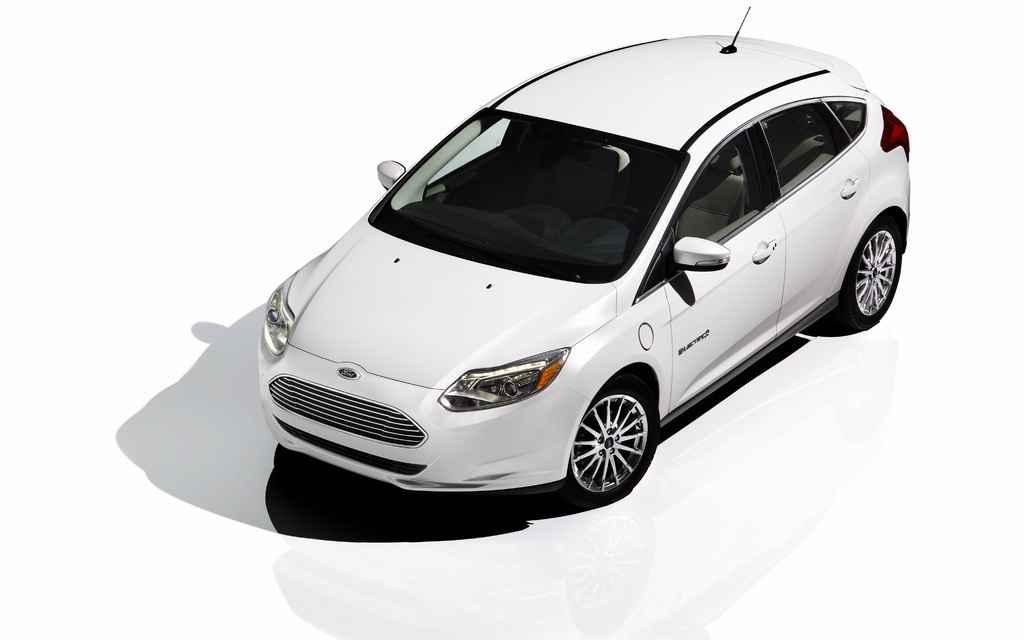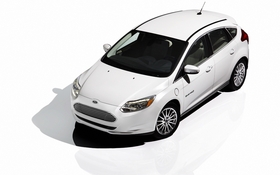2012 Ford Focus Electric: Electricity to the rescue
At the dawn of the automobile age, consumers had the choice between electric, gas and steam engines and could select the one that best suited their needs. Eventually, gas won out for practical reasons: better range, lightness, accessibility, etc. Unfortunately, gas pollutes and is non-renewable. A century later, we need another solution.
After hybridization, automakers are turning more and more toward electricity. Toyota, which was one of the leaders in the field of hybrid cars, has been surpassed by Mitsubishi (i-MiEV), Nissan (Leaf), Chevrolet (Volt) and Ford (Transit Connect EV and soon Focus EV).
Focus Electric
Ford recently invited journalists to an introduction on its hybrid/electric program and gave particular emphasis on the Focus Electric, which will soon be available to the general public. This ionized Focus will be very similar to the conventional Focus. So similar in fact, that it is built on the same assembly line at the MAP (Michigan Assembly Plant in Wayne, a suburb of Dearborn). Besides the engine, the main difference between a regular Focus and an electric Focus is the electric version’s 350 additional kilos (giving it a total weight of 1,665 kilos).
Note that this assembly line is singularly flexible. When an electric Focus is on the line, all the employees have to do is install a battery pack instead of a fuel tank. In this plant, they also assemble the C-Max hybrid and plug-in versions, but we’ll come back to that later.
Getting back to our electric Focus, its engine develops the equivalent of 143 horsepower (107 kW) and 184 lbs.-ft. of torque. It has a 23 kWh-capacity lithium-ion battery provided by LG Chem. Interestingly, it is liquid cooled AND heated. According to Ford, its range is 160 km, and it takes three to four hours to recharge at a 240-volt outlet and 18 to 20 hours at a regular outlet. If you want my opinion, it’s not so much the range that’s the problem as it is the recharging time with a 120-volt outlet. You won’t be able to swing a short night of charging if you plan on leaving again the next morning.
It’s all about budget
But I digress... The Focus Electric will go for $41,199 in Canada, which is more than a little pricy for a compact. However, lucky Quebec residents can subtract the $8,000 rebate from the provincial government – if you purchase it in 2012, that is. The amount will go down to $6,000 in 2013, $4,000 in 2014 and $2,000 in 2015. In defence of this gas-free Focus, note that it will come fully loaded. Even the MyFord Mobile application, which manages an infinite number of the car’s settings remotely – and is compatible with BlackBerry, iPhone and Android — will be free for five years. Let’s only hope that it will be easier to understand than the ever-annoying MyFord Touch system. The Focus Electric will only be available as a hatchback.
This Focus will be sold by a network of Ford dealerships that will have been certified in advance. Dealerships that are currently certified to sell and service hybrid vehicles will not necessarily be able to do the same for plug-in hybrids.
C-Max
Already on the scene in Europe for several years now, the Ford C-Max will only be sold in Canada as a hybrid or rechargeable hybrid (plug-in). The C-Max, built on a Focus platform, will not be offered with a gasoline engine so as not to hurt the new Escape whose final version was unveiled at the Detroit Auto Show in January 2012.
The C-Max Hybrid will get a 2.0-litre gasoline engine aided by an electric motor, but we don’t yet know how powerful it will be. What we do know is that it will feature approximately 185-hp combined power and 130 lbs.-ft. of torque. It will feature a continuously variable transmission (CVT) and a lithium-ion battery pack. Ford says that you’ll be able to go up to 75 km/hr in electric mode only. Note that this system has been developed entirely by Ford.
As for the C-Max Energi, a replica of the Chevrolet Volt, its gas engine will work as a generator and recharge the battery while the car is in motion. Once properly charged, the C-Max Energi will have a driving range of more than 800 kilometres. The C-Max Hybrid and Energi will be unveiled in 2012 as 2013 models. We’ll keep you updated as information comes available.
While electricity, which was banned from the auto industry for so long, seems to be making a comeback, it’s still too soon to tell if it will be successful. Obviously, today’s all-electric cars aren’t really well suited for life outside of cities. At present, hybrids or rechargeable hybrids (plug-ins or, if you prefer, with extended driving range) would be much more appropriate. In any case, it’s clear that within the next few years, consumers will have a choice of many different engine types. It’s no accident that Ford is planning on building 100,000 electric vehicles (hybrids, extended range hybrids or all-electric) by 2013.












